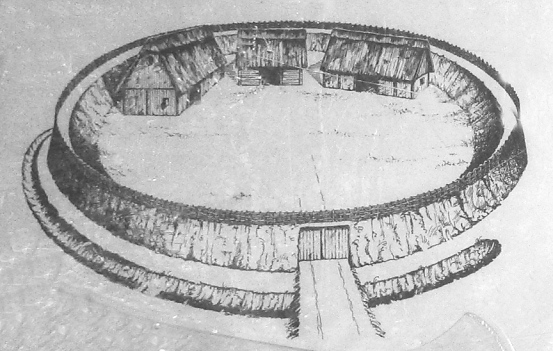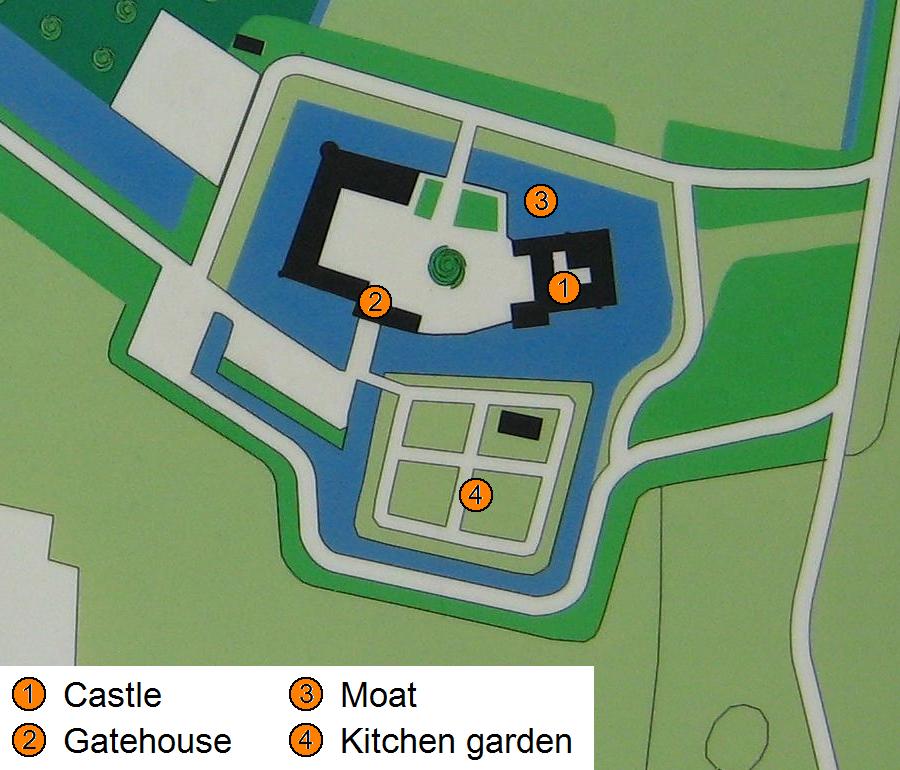|
Harliburg
The Harliburg (also ''Harlyburg'' or ''Herlingsberg'') is a former imperial castle (''Reichsburg'') in the Harly Forest, in southeast Lower Saxony, Germany. Location The location of the former hillside castle () is about 1 km (as the crow flies) north-northeast of the town of Vienenburg (141 m above NN), in the county of Goslar and around 10 km (as the crow flies) northeast of the town of Goslar. The River Oker flows below the castle site to the south and east, around the southeastern end of the Harly Forest. A few hundred metres southwest of the Harliburg, in the Oker valley, lies Lake Vienenburg (''Vienenburger See''). Almost exactly 2 km west-northwest is the hill of Harlyberg (255.9 m above NN), the highest point of the Harly Forest. A section of the A 395 motorway runs past the Harly Forest, a few hundred metres east of the old Harliburg, where it is crossed by the B 241 federal road. History The Harliburg was built in 1203 by Kin ... [...More Info...] [...Related Items...] OR: [Wikipedia] [Google] [Baidu] |
Imperial Castle
An imperial castle or ''Reichsburg'' was a castle built by order of the Holy Roman Emperor, whose management was entrusted to '' Reichsministeriales'' or ''Burgmannen''. It is not possible to identify a clear distinction between imperial castles and the fortified imperial palaces or ''Pfalzen'', because many imperial castles were used by German kings for temporary stays. Many imperial castles were built in regions such as Swabia, Franconia, the Palatinate and the Alsace, where there were a high density of imperial estates (''Reichsgüter'') during the Hohenstaufen era. List of imperial castles (''Reichsburgen'') France * Château du Haut-Kœnigsbourg, Orschwiller, Alsace Germany Baden-Württemberg * Grüningen Castle, Markgröningen * Stettenfels Castle, Untergruppenbach Bavaria * Nuremberg Castle, Nuremberg * Harburg Castle, Harburg * Königsberg Castle, Königsberg * Schwedenschanze Castle, Cham * Wildenberg Castle, Kirchzell Hesse * Boyneburg, Sontra * ... [...More Info...] [...Related Items...] OR: [Wikipedia] [Google] [Baidu] |
Harly Forest
The Harly Forest (german: Harly-Wald, also ''Harlywald'' or just ''Harly'') is a hill range up to above NN in the district of Goslar in southeastern Lower Saxony, Germany. Geography The low ridge is situated in the northern foothills of the Harz mountain range, stretching southeast of the Innerste Uplands from the Salzgitter Hills to the Oker river. It is located about —as the crow flies—northeast of Goslar and immediately north-northwest of the municipality of Vienenburg, surrounded by the villages of Weddingen, Lengde and Beuchte (all part of the Schladen-Werla municipality). The range is about long by wide and its eastern edge overlooks the Oker valley. It may be reached via the A 395 motorway from Brunswick, the B 241 and B 82 highways, as well as by several side roads and tracks branching off those roads. The highest hill in the Harly Forest is the Harlyberg, roughly 256 metres high, atop which an observation tower, the Harly Tower (''Harlyturm''), stands ... [...More Info...] [...Related Items...] OR: [Wikipedia] [Google] [Baidu] |
Vienenburg
Vienenburg is a borough of Goslar, capital of the Goslar (district), Goslar district, in Lower Saxony, Germany. The former independent municipality was incorporated in Goslar on 1 January 2014. Geography It is situated in the north of the Harz mountain range and east of the Harly Forest on the Oker River near its confluence with the Radau, about northeast of the Goslar town centre. Neighbouring municipalities are Bad Harzburg in the south and Schladen-Werla in the north. The former township consisted of Vienenburg proper and the surrounding villages Immenrode, Lengde, Weddingen, Lochtum and Wiedelah, all incorporated in 1972. Situated in a mainly agricultural area, it is known for the Harzer cheese, although the production was transferred to Saxony in 2004. History The Harlyberg hill (256m/840 ft) north of the town was the site of a castle built in 1203 by the House of Welf, Welf king Otto IV, Holy Roman Emperor, Otto IV of Germany to threaten the trade route to History of G ... [...More Info...] [...Related Items...] OR: [Wikipedia] [Google] [Baidu] |
House Of Welf
The House of Welf (also Guelf or Guelph) is a European dynasty that has included many German and British monarchs from the 11th to 20th century and Emperor Ivan VI of Russia in the 18th century. The originally Franconia, Franconian family from the Meuse-Moselle area was closely related to the imperial family of the Carolingians. Origins The (Younger) House of Welf is the older branch of the House of Este, a dynasty whose earliest known members lived in Veneto and Lombardy in the late 9th/early 10th century, sometimes called Welf-Este. The first member was Welf I, Duke of Bavaria, also known as Welf IV. He inherited the property of the Elder House of Welf when his maternal uncle Welf, Duke of Carinthia, Welf III, Duke of Carinthia and Verona, the last male Welf of the Elder House, died in 1055. Welf IV was the son of Welf III's sister Kunigunde of Altdorf and her husband Albert Azzo II, Margrave of Milan. In 1070, Welf IV became Duke of Bavaria. Welf II, Duke of Bavaria marrie ... [...More Info...] [...Related Items...] OR: [Wikipedia] [Google] [Baidu] |
Heinrich Rosla
Heinrich may refer to: People * Heinrich (given name), a given name (including a list of people with the name) * Heinrich (surname), a surname (including a list of people with the name) *Hetty (given name), a given name (including a list of people with the name) Places * Heinrich (crater), a lunar crater * Heinrich-Hertz-Turm, a telecommunication tower and landmark of Hamburg, Germany Other uses * Heinrich event, a climatic event during the last ice age * Heinrich (card game), a north German card game * Heinrich (farmer), participant in the German TV show a ''Farmer Wants a Wife'' * Heinrich Greif Prize, an award of the former East German government * Heinrich Heine Prize, the name of two different awards * Heinrich Mann Prize, a literary award given by the Berlin Academy of Art * Heinrich Tessenow Medal, an architecture prize established in 1963 * Heinrich Wieland Prize, an annual award in the fields of chemistry, biochemistry and physiology * Heinrich, known as Haida in Ja ... [...More Info...] [...Related Items...] OR: [Wikipedia] [Google] [Baidu] |
Moat
A moat is a deep, broad ditch, either dry or filled with water, that is dug and surrounds a castle, fortification, building or town, historically to provide it with a preliminary line of defence. In some places moats evolved into more extensive water defences, including natural or artificial lakes, dams and sluices. In older fortifications, such as hillforts, they are usually referred to simply as ditches, although the function is similar. In later periods, moats or water defences may be largely ornamental. They could also act as a sewer. Historical use Ancient Some of the earliest evidence of moats has been uncovered around ancient Egyptian castles. One example is at Buhen, a castle excavated in Nubia. Other evidence of ancient moats is found in the ruins of Babylon, and in reliefs from ancient Egypt, Assyria, and other cultures in the region. Evidence of early moats around settlements has been discovered in many archaeological sites throughout Southeast Asia, including ... [...More Info...] [...Related Items...] OR: [Wikipedia] [Google] [Baidu] |
Circular Ramparts
A circular rampart (German: ''Ringwall'') is an embankment built in the shape of a circle that was used as part of the defences for a military fortification, hill fort or refuge, or was built for religious purposes or as a place of gathering. The period during which these structures were built ranged from the Neolithic to the Middle Ages. Construction The key feature of a circular Rampart (fortification), rampart is that the Earthworks (engineering)#Military use, embankment formed the primary element of the defensive fortification. It can be constructed in various ways: as a simple earth embankment, as a wood and earth structure, or as a wall. Circular ramparts usually have a moat or Ditch (fortification), ditch in front of them; the embankment can be enhanced with a wooden palisade. Often several concentric rings were built, which produced a more effective defensive position against attackers. The interior of such sites often shows evidence of buildings such as halls, barns, and ... [...More Info...] [...Related Items...] OR: [Wikipedia] [Google] [Baidu] |
Water Castle
A water castle is a castle whose site is largely defended by water. It can be entirely surrounded by water-filled moats (moated castle) or natural waterbodies such as island castles in a river or offshore. The term comes from European castle studies, mainly German ''Burgenkunde'', but is sometimes used in English-language popular science books and websites, and is mentioned in other more academic works. When stately homes were built in such a location, or a Wasserburg was later rebuilt as a residential manor, the German term becomes Wasserschloss, lit. "water palace/manor". Description Forde-Johnston describes such a site as "a castle in which water plays a prominent part in the defences." Apart from hindering attackers, an abundant supply of water was also an advantage during a siege. Topographically, such structures are a type of lowland castle, low-lying castle. Such a castle usually had only one entrance, which was via a drawbridge and that could be raised for protection in ... [...More Info...] [...Related Items...] OR: [Wikipedia] [Google] [Baidu] |
Slighting
Slighting is the deliberate damage of high-status buildings to reduce their value as military, administrative or social structures. This destruction of property sometimes extended to the contents of buildings and the surrounding landscape. It is a phenomenon with complex motivations and was often used as a tool of control. Slighting spanned cultures and periods, with especially well-known examples from the English Civil War in the 17th century. Meaning and use Slighting is the act of deliberately damaging a high-status building, especially a castle or fortification, which could include its contents and the surrounding area. The first recorded use of the word 'slighting' to mean a form of destruction was in 1613. Castles are complex structures combining military, social, and administrative uses, and the decision to slight them took these various roles into account. The purpose of slighting was to reduce the value of the building, whether military, social, or administrative. Des ... [...More Info...] [...Related Items...] OR: [Wikipedia] [Google] [Baidu] |
Highway Robbery
A highwayman was a robber who stole from travellers. This type of thief usually travelled and robbed by horse as compared to a footpad who travelled and robbed on foot; mounted highwaymen were widely considered to be socially superior to footpads. Such criminals operated until the mid or late 19th century. Highwaywomen, such as Katherine Ferrers, were said to also exist, often dressing as men, especially in fiction. The first attestation of the word ''highwayman'' is from 1617. Euphemisms such as "knights of the road" and "gentlemen of the road" were sometimes used by people interested in romanticizing (with a Robin Hood–esque slant) what was often an especially violent form of stealing. In the 19th-century American West, highwaymen were sometimes known as ''road agents''. In Australia, they were known as bushrangers. Robbing The great age of highwaymen was the period from the Restoration in 1660 to the death of Queen Anne in 1714. Some of them are known to have been disb ... [...More Info...] [...Related Items...] OR: [Wikipedia] [Google] [Baidu] |







